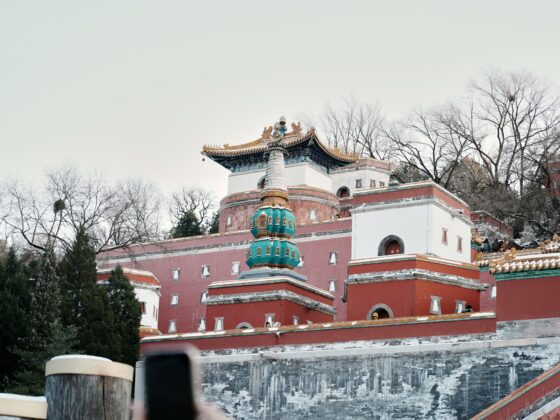Few names in travel carry the cultural resonance of the Orient Express. Once the Train of Kings, King of Trains, its myth was immortalized by royalty, diplomats, and novelists. Today, under the stewardship of Accor and in strategic partnership with LVMH, the brand is staging one of the most ambitious revivals in the luxury sector – not as a single train, but as a trilogy of experiences: Trains, Hotels, and Sailing Yachts.
This ecosystem approach signals a strategic shift: Orient Express is no longer a nostalgic brand but a 21st-century luxury lifestyle platform capable of capturing the full journey of the ultra-wealthy traveler.
✦ From Rail Legend to Hospitality Empire
Founded in 1883, the Orient Express redefined long-distance travel, with routes such as Paris–Istanbul becoming synonymous with intrigue, gastronomy, and cultural diplomacy. Yet by 1977, air travel had rendered its iconic direct service obsolete.
Fast forward: Accor’s acquisition of the brand (culminating in sole ownership in 2022) and its partnership with LVMH (2023/24) set the stage for a rebirth. The vision is bold: to move from product to ecosystem, from train operator to global curator of luxury experiences by land and sea.
✦ The Art of Travel Reimagined
The revival pivots on a unifying philosophy: the Art of Travel, built on four pillars:
- Heritage as innovation – Original Lalique glass panels and restored 1920s carriages, alongside collaborations with designers like Maxime d’Angeac, Dimorestudio, Hugo Toro, and Aline Asmar d’Amman.
- Slow travel – A countercultural embrace of immersive journeys, where travel itself is the destination.
- Craftsmanship at the core – French and Italian savoir-faire as narrative assets, from marquetry to haute cuisine.
- Immersive aesthetic worlds – Creating holistic works of art where trains, hotels, and yachts converge in design and storytelling.
✦ Competitive Landscape: Belmond vs Accor
Here lies the intrigue: two Orient Expresses.
- Belmond’s Venice Simplon-Orient-Express (VSOE, LVMH): the authentic custodian of 1920s Art Deco rail, with restored carriages, Dior Spa, tiered cabins, and Chef Jean Imbert’s gastronomy.
- Accor’s Orient Express: broader ambition—dual rail strategy (La Dolce Vita in Italy; L’Orient Express Paris–Istanbul revival), plus hotels and yachts.
Accor’s flanking maneuver is clear: build differentiated markets (Italian rail cruises) while preparing a head-to-head challenge to Belmond’s VSOE. The added hotel anchors in Rome and Venice create a seamless travel loop Belmond cannot replicate.
✦ The Dual-Pronged Rail Strategy
- La Dolce Vita Orient Express (2025): 1960s Italian glamour reinterpreted as “rail cruise,” all en-suite cabins, Michelin-starred gastronomy, and itineraries from Tuscan vineyards to Sicilian shores.
- L’Orient Express (2026): resurrection of 17 original 1920s carriages, including René Lalique’s “Blackbirds & Grapes” panels. Designed by Maxime d’Angeac, it reclaims the Paris–Istanbul route with a new Presidential Suite that occupies an entire carriage.
✦ Beyond Rails:
Hotels as Anchors
- La Minerva, Rome (2025): A palazzo reborn, designed by Hugo Toro, serving as the flagship and hub for Italian rail journeys.
- Palazzo Donà Giovannelli, Venice (2026): A canalside jewel by Aline Asmar d’Amman, designed as a theatrical crossroads of East and West.
These hotels act as brand embassies, extending the voyage into static yet immersive cultural stages.
Charting New Waters: The Orient Express Yachts
Perhaps the boldest step is maritime.
- The Orient Express Corinthian (2026): The world’s largest sailing yacht, with SolidSail wind propulsion, LNG hybrid engines, and future hydrogen-readiness.
- Designed by Maxime d’Angeac, with gastronomy led by Chef Yannick Alléno.
- Just 54 suites for 110 guests, including a Presidential Suite of 900 – 1,400 m².
This is a Blue Ocean strategy—creating uncontested space between heritage rail and ultra-exclusive yachting.
The genius of this revival lies in synergy. Trains, hotels, and yachts form a closed-loop luxury circuit, echoing the Grand Tour of the 19th century—yet branded, seamless, and elevated to 21st-century expectations.
Imagine: Rome → La Dolce Vita train → Venice → Palazzo Donà Giovannelli → Mediterranean yacht voyage. One brand, one narrative, a lifetime of loyalty.
✦ The Quiet Briefing
The risks: execution complexity, brand consistency, and consumer confusion with Belmond. The rewards: establishing Orient Express as the undisputed global leader in heritage-based luxury travel ecosystems.
This is not nostalgia – it is strategic authorship of the future of luxury travel.
The Orient Express revival demonstrates how heritage can be re-authored into ecosystem strategy. It is a case study in expanding brand equity across verticals while creating uncontested luxury markets.
Warmly, Carrie








